Related Research Articles
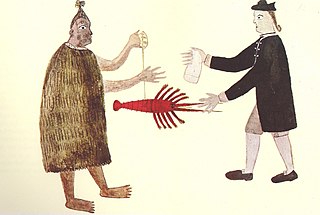
The Treaty of Waitangi, sometimes referred to as Te Tiriti, is a document of central importance to the history of New Zealand, its constitution, and its national mythos. It has played a major role in the treatment of the Māori people in New Zealand by successive governments and the wider population, something that has been especially prominent from the late 20th century. The treaty document is an agreement, not a treaty as recognised in international law. It was first signed on 6 February 1840 by Captain William Hobson as consul for the British Crown and by Māori chiefs from the North Island of New Zealand. The treaty's quasi-legal status satisfies the demands of biculturalism in contemporary New Zealand society. In general terms, it is interpreted today as having established a partnership between equals in a way the Crown likely did not intend it to in 1840. Specifically, the treaty is seen, first, as entitling Māori to enjoyment of land and of natural resources and, if that right were ever breached, to restitution. Second, the treaty's quasi-legal status has clouded the question of whether Māori had ceded sovereignty to the Crown in 1840, and if so, whether such sovereignty remains intact.

Waitangi Day, the national day of New Zealand, marks the anniversary of the initial signing—on 6 February 1840—of the Treaty of Waitangi. The Treaty of Waitangi was an agreement towards British sovereignty by representatives of the Crown and indigenous Māori chiefs, and so is regarded by many as the founding document of the nation.

Te Puea Hērangi, known by the name Princess Te Puea, was a Māori leader from New Zealand's Waikato region. Her mother, Tiahuia, was the elder sister of King Mahuta.

Ngāpuhi is a Māori iwi associated with the Northland regions of New Zealand centred in the Hokianga, the Bay of Islands, and Whangārei.

Tūrangawaewae is a marae and a royal residence in Ngāruawāhia, Waikato, New Zealand. It is the official residence of the Māori monarch and the administrative headquarters of the Kīngitanga movement. Of its numerous buildings, the two principal ones are the Māhinārangi meeting house, and Tūrongo House, which is official residence of the queen or king.

The Māori King movement, called the Kīngitanga in Māori, is a Māori movement that arose among some of the Māori iwi (tribes) of New Zealand in the central North Island in the 1850s, to establish a role similar in status to that of the monarchy of the United Kingdom as a way of halting the alienation of Māori land. The first Māori king, Pōtatau Te Wherowhero, was crowned in 1858. The monarchy is non-hereditary in principle, although every monarch since Pōtatau Te Wherowhero has been a child of the previous monarch. The eighth monarch is Ngā Wai Hono i te Pō, who was elected and crowned in September 2024.

Ngā Toki Matawhaorua of Pewhairangi, often simply known as Ngā Toki, is the name of a New Zealand waka taua.
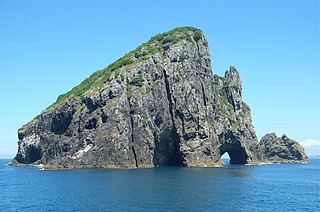
Piercy Island, also known as "The Hole In The Rock", is located off the north coast of the North Island of New Zealand. It is at the very northern tip of Cape Brett in the Bay of Islands. It is Māori freehold land, which is administered by the Motu Kōkako Ahu Whenua Trust for the benefit of the descendants of the traditional owners.
In Māori tradition, Ngātokimatawhaorua was one of the great ocean-going, voyaging canoes that was used in the migrations that settled New Zealand.
Uruaokapuarangi was one of the great ocean-going, voyaging canoes that was used in the migrations that settled the South Island according to Māori tradition.
Merata Mita was a New Zealand filmmaker, producer, and writer, and a key figure in the growth of the Māori screen industry.
Wiremu "Piri" Te Ranga Poutapu was a New Zealand master of Māori carving and a carpenter.
George Eric Oakes Ramsden (1898–1962) was a New Zealand journalist, writer and art critic. He was born in Martinborough, Wairarapa, New Zealand on 1 August 1898 and died at Wellington on 21 May 1962.
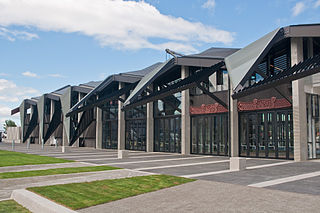
Te Raukura, otherwise known as Te Wharewaka o Poneke is a building located on Taranaki Street Wharf, Wellington waterfront, New Zealand. It houses a conference venue, Karaka Cafe, and waka house.

Ngāti Whātua Ōrākei or Ngāti Whātua-o-Ōrākei is an Auckland-based Māori hapū (sub-tribe) in New Zealand. Together with Te Uri-o-Hau, Te Roroa and Te Taoū, it comprises the iwi (tribe) of Ngāti Whātua. These four hapū can act together or separately as independent tribes. The hapū's rohe is mostly in Tāmaki Makaurau, the site of present-day Auckland. Ngāti Whātua Ōrākei has around 6,000 members whose collective affairs are managed by the Ngāti Whātua Ōrākei Trust.

Tāmaki Māori are Māori iwi and hapū who have a strong connection to Tāmaki Makaurau, and whose rohe was traditionally within the region. Among Ngā Mana Whenua o Tāmaki Makaurau, also known as the Tāmaki Collective, there are thirteen iwi and hapū, organised into three rōpū (collectives), however Tāmaki Māori can also refer to subtribes and historical iwi not included in this list.
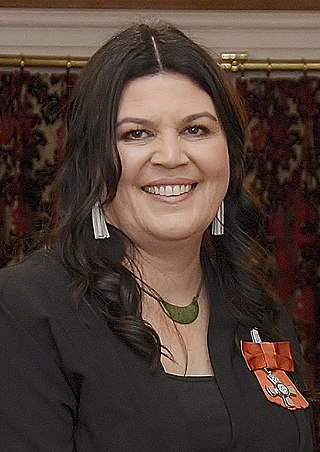
Ainsley Amohaere Gardiner is a film producer from New Zealand.
Mana motuhake is a phrase in the Māori language that means self determination, with the principle being autonomy and control. It is sometimes translated to the concept of sovereignty.
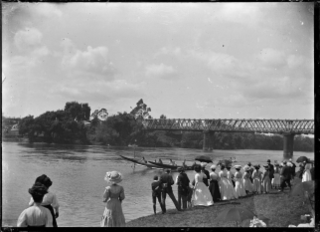
Waka hurdling, also sometimes called waka peke, is a Māori sporting competition of jumping unornamented waka tīwai over wooden beams set in the water. There have been attempts to revive the sport and keep the tradition going. The Auckland Museum has a photograph of the sport and spectators. The hurdles are made of long tree branches. Albert Percy Godber photographed the sport in 1910. The competition is part of the festivities of traditional Māori regattas.

Patu! is a 1983 New Zealand documentary film directed by Merata Mita about the controversial 1981 Springbok tour. It follows the inner workings of the campaign against the tour, and captures scenes of violent conflict between police and protesters. It is a significant work of activist and indigenous filmmaking, and of New Zealand filmmaking in general.
References
- ↑ "New Zealand International Film Festival: Mana Waka" – via www.nziff.co.nz.
- 1 2 "Mita's troubled waters (1989 interview)". The New Zealand Herald. 21 December 1989. Archived from the original on 7 January 2014. Retrieved 26 August 2020.
- ↑ "Ceremonial War Canoe".
- ↑ "Tūrangawaewae Regatta celebrates revitalisation in its 123rd year". Stuff. 12 March 2018.
- ↑ Kelly, Emma (2014). "A critical examination of film archiving and curatorial practices in Aotearoa New Zealand through the life and work of Jonathan Dennis" (PDF). Retrieved 29 August 2020.
- ↑ "Fight for treasured film of Princess Te Puea". Māori Television.
- ↑ Calder, Peter (15 July 2011). "Watching Brief: Mana Waka's triumphant return" – via www.nzherald.co.nz.
- ↑ "Memory of the world: national cinematic heritage". UNESCO. p. 45.